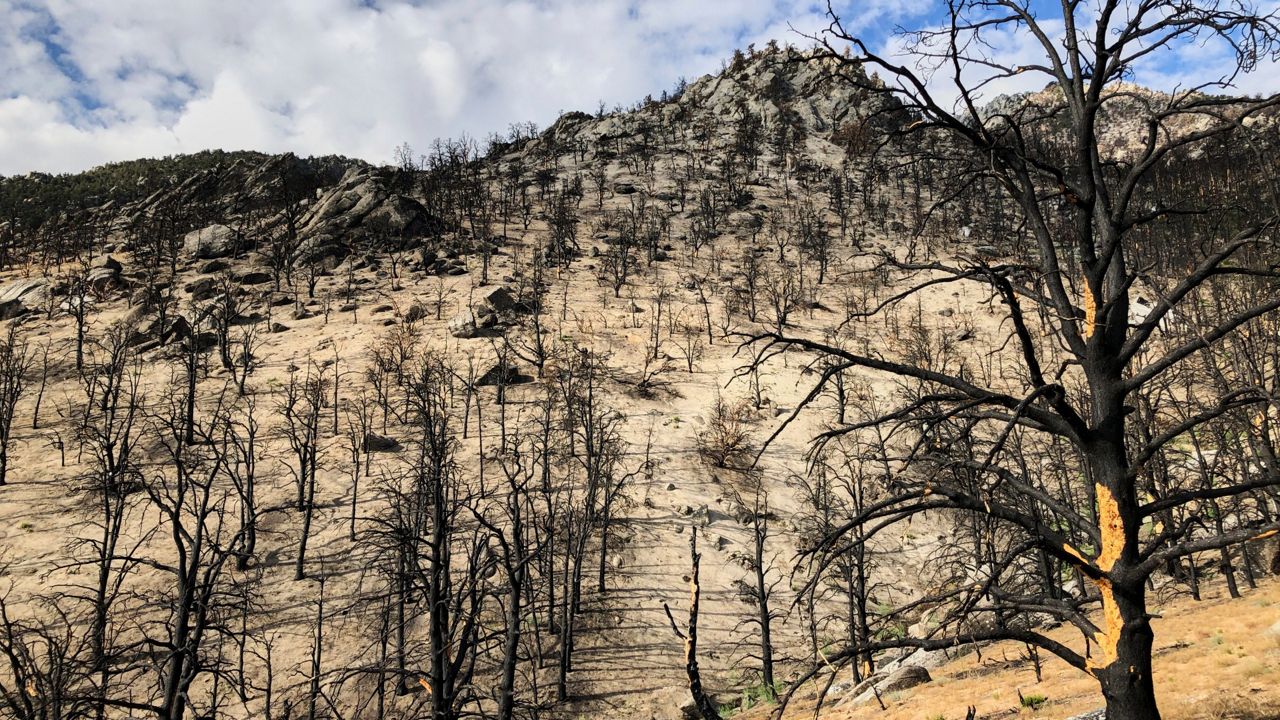As many as one in six tree species native to the contiguous 48 states is threatened with extinction, according to a first-of-its-kind assessment.
What You Need To Know
- As many as one in six tree species native to the contiguous 48 states is threatened with extinction, according to a first-of-its-kind assessment
- The most common threats to native U.S. trees are invasive insects and diseases, climate change and extreme weather, changes to habitats, and biological resource uses such as logging, the analysis said
- According to the researchers, The Global Tree Assessment aims to assess the threats posed to all of the world’s roughly 60,000 tree species, but most species native to the continental U.S. had either never been analyzed or the assessments were outdated
- The researchers concluded that 11-16% of the tree species are threatened with extinction
The most common threats to native U.S. trees are invasive insects and diseases, climate change and extreme weather, changes to habitats, and biological resource uses such as logging, the analysis said.
The findings are being published in the journal Plants People Planet.
According to the researchers, The Global Tree Assessment aims to assess the threats posed to all of the world’s roughly 60,000 tree species, but most species native to the continental U.S. had either never been analyzed or the assessments were outdated.
To close the information gap, researchers from Botanic Gardens Conservation International-U.S., The Morton Arboretum and NatureServe conducted a five-year study to assess the threats to all 881 native tree species in the lower 48 states. The scientists partnered on the project with the U.S. Botanic Garden and U.S. Department of Agriculture’s Forest Service.
The researchers concluded that 11-16% of the tree species are threatened with extinction. They said the findings can help protect species from being wiped out.
“Trees form the basis of many of the world’s terrestrial ecosystems,” Sean T. O’Brien, president and CEO of NatureServe, said in a statement. “Understanding what trees are threatened and why is critical to informing conservation for trees and ecosystems across the nation.”
Oaks and hawthorns dominate the U.S. tree flora, with 85 and 94 native species, respectively. They’re also the genera most at risk, with 29 oaks and 17 hawthorns identified as threatened, according to the paper.
Florida (45) and California (44) have the highest number of threatened tree species, the researchers found. Trees that either evolved in the contiguous U.S. or are only found here are largely concentrated in the southeastern part of the country, Texas and California, they noted.
Among the biggest threats to trees are the emerald ash borer, an invasive insect whose larvae have decimated the ash population by feeding on the living tissue just beneath a tree’s bark, and the disease known as “laurel wilt” that attacks three species of evergreen trees.
While such insects and pathogens are considered the biggest threat to tree species, climate change, including an increasing number of wildfires, is likely exacerbating the situation, the study said.
Ironically, the researchers note that the “conservation and restoration of trees and native forests on a country-wide (and global) scale has enormous potential to mitigate climate change, particularly through sequestration of carbon.”
Ninety-five percent of native U.S. tree species can be found in botanical gardens, arboretums or seed banks, the scientists said. However, 17 species are not being preserved outside their natural locations, putting them at risk to someday vanish completely.
The federal government currently only recognizes eight U.S. tree species as endangered or threatened, which carries varying levels of protection and regulation.
“This assessment advances our understanding of the threats faced by America’s native trees and will help focus the conservation efforts of public gardens, federal agencies and conservation organizations,” said Susan Pell, acting executive director of the U.S. Botanic Garden.


